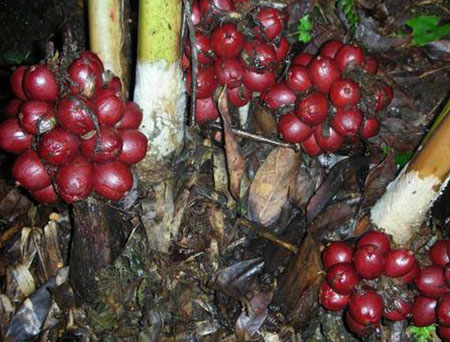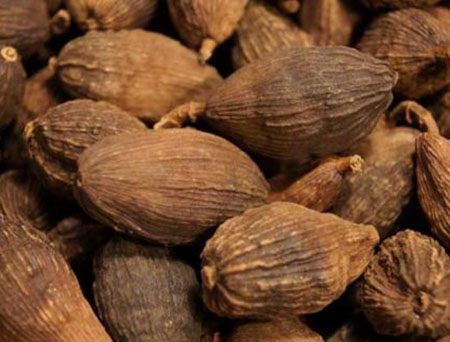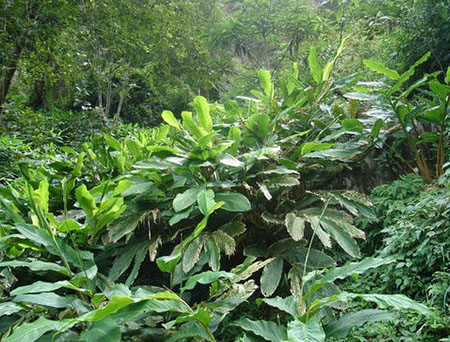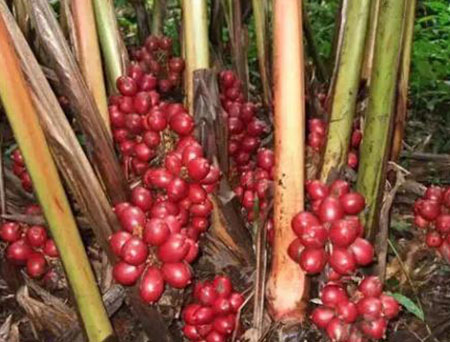How to Grow Tsaoko
Written by Maggie
Mar 30 2021

Tsaoko is the fruit of the ginger family cardamom genus. The dried fruit has a special strong spicy fragrance, which can remove fishy smell and increase appetite. It is a good product in cooking condiments. It is known as the "spicy flavor in food seasoning". one". So how to Grow Tsaoko? Let's go see it together!
Tsaoko, also known as grass nut, grass fruit. The dried fruit is oval, with three obtuse edges, 2 to 4 cm in length and 1 to 2.5 cm in diameter. There is a round protrusion at the top and a stalk at the base. The surface is grayish brown to reddish brown, with significant longitudinal grooves and ridges. The texture of tsaoko is hard, and the inside is off-white after breaking open. The air is weak, and the seeds emit a peculiar smell when they are broken, and the taste is pungent. It is better to be large, full, reddish brown in color and strong in smell. From October to November, the fruits begin to mature and become reddish-brown without cracking. Tsaoko is harvested and dried in the sun or slightly fired. Distributed in Yunnan, Guangxi, Guizhou and other places in China. Mainly produced in Yunnan, Guangxi, Guizhou and other places.
Tsaoko has a special strong spicy aroma, which can remove fishy smell and increase appetite. It is a good product in cooking condiments and is known as one of the five spices in food seasoning. Tsaoko is used to cook dishes, it can remove fishy and mutton. When cooking fish and meat, the taste is better with Cao Guo. When stewing beef and mutton, put some grass fruits to make the mutton fragrant and delicious, but also to avoid the mutton smell. Preparing refined brine and cooking meat, dishes, etc. to increase the fragrance, such as the beef with grass and fruit; another example, the Yunnan specialties also use grass fruit to increase the fragrance.
Tsaoko Picture

Growing method of Tsaoko
1. Planting and Cultivation
It is advisable to choose valley slopes, streams or under sparse forests to grow Tsaoko. The soil is rich in humus and loose-textured sandy loam. Barren soil and heavy clay are not suitable for planting. On the selected forest land, weeds and shrubs should be cleaned up, and over-dense trees should be thinned down, the canopy closure should be adjusted to 50{bf}-60{bf}, and the soil turning depth should be 20-27 cm. The starting border is 1.2-1.5 meters wide and 20 cm high. Holes are dug in the border according to the row spacing. The hole size is 40 cm × 40 cm × 30 cm. Compost, stable manure and fired soil are used as base fertilizer in the hole and mixed with topsoil.
2. Propagation method: seeds and ramets.
Seed propagation Seeds selection
Choose high-yield plants with large fruit, full seeds, and no pests and diseases as planting plants to plant Tsaoko.
Seed collection and seed treatment
When the peel of Tsaoko is purple-red, the seeds are silver-gray, and the sweet fruits are chewed, pick them, and then select the plump, fully mature, and disease-free fruits for seeding, which should be picked and planted. Peel off the peel before planting, wash the pulp, soak the seeds in clean water for 10-12 hours, and then use coarse sand and seeds in a bamboo pan to rub the arils. Or mix the seeds with 30{bf} plant ash, rub the seeds with your hands to remove the surface colloid layer, and then sow or dry and save until sowing in the next spring.
Sowing time.
Tsaoko can be harvested and sown at the same time, in spring and autumn. Autumn is better. Spring sowing should be carried out when the temperature rises above 18℃. The average temperature of the autumn sowing month is above 18-20℃. In one month, a large number of seeds will germinate and unearth. The germination rate can reach 80{bf} or more in 40-50 days after sowing. From December to February of the following year, the germination rate can reach over 90{bf}.
Sowing method
When sowing the Tsaoko, ditch the borders with a row spacing of 15-20 cm, and place the seeds at a plant spacing of about 6 cm. The seeding depth is 1.5-2 cm. After sowing, cover the soil and cover the grass with water. Seedlings can be planted after half a year.

Ramming reproduction
Before the sprouts start to germinate in the spring and before they are unearthed, select the annual sturdy ramets from the mother plants of Tsaoko, cut the lower leaves, and leave 2-3 upper leaves to reduce water evaporation. Dug up the budded rhizome, cut it to 7-10 cm, cut it off and plant it. Open the holes according to the plant row spacing of 1.3 meters × 1.7 meters, and the specifications of the holes are 50 cm × 50 cm × 40 cm, and each hole is planted with 1 cluster, covered with soil and compacted, and poured enough root water.
Field management
1. Shading: Reveal the Tsaoko immediately after emergence. If the canopy closure is not enough, set up a simple awning for shade.
2. Intertillage and weeding: from April to June each year after planting Tsaoko, intertillage and weeding are performed once each year. When weeding once after taking, the old and diseased plants that have died after the results are cut.
3. Top dressing: top dressing in the production areas where the conditions permit. In early spring, mix dried chicken manure with Tsaoko plant ash and sprinkle it around the plants. When the plant just blooms in summer, sprinkle plant ash on the leaves before the dew is dry in the morning to make extra-root topdressing. After harvesting the fruit in early winter, use manure and fire to burn the soil. At the root. It can also be combined with cultivating and weeding, and topdressing in a circular furrow.
4. Soil cultivation: soil cultivation should be carried out after the Tsaoko fruit is planted before flowering, so that the young buds can grow robustly. After flowering, soil cultivation should not be carried out, so as not to damage the flower buds and cause rot and no fruit. When weeding every time, if you find exposed roots, you can cultivate a small amount of humus at the roots of Tsaoko to facilitate the roots to absorb nutrients.
5. Irrigation and drainage: When there is a drought in the roots of Tsaoko, you should irrigate in time; when there is too much rain, you should pay attention to drainage to avoid hurting the flower buds of Tsaoko. At the same time, remove the debris around the flower buds to make them ventilated and light to avoid falling flowers. Rotten fruit.
6. Adjust the canopy closure: During the entire growth and development stage, Tsaoko needs a certain shade. When the tree growth causes insufficient light transmission in the forest, thinning or pruning should be appropriate to control the canopy closure at 50{bf}-60 {Bf}, to facilitate the growth of new plants.

Latest Updated
- Benefits of Bugleweed - 7 Science-backed Health Benefits
- Bugleweed Dangers & Side Effects - Is It Poisonous?
- How to Plant Evergreen Trees - What You Should Know
- When to Plant Evergreens - Grow Guide for Evergreen Trees
- 12 Wonderful Evergreen Shrubs for Your Garden
- 12 Popular Evergreen Plants with Pictures for Beginners
- When And How To Prune A Lilac Bush Like a Pro
- How to Grow & Care for Lilac Vine (Hardenbergia Violacea)
- Japanese Lilac Tree (Syringa Reticulata) Care & Propagation Guide
- Shumard Oak Pros and Cons - What to Know
Popular Articles
- Winter maintenance of Antirrhinum Majus
- How to Grow Terminalia Mantaly Tree
- How to Grow and Care for Crossostephium Chinense
- How to grow Antirrhinum Majus in spring
- Peristeria Elata (Dove Orchid) Profile: Info & Care Guide
- Underwatered Snake Plant (Sansevieria Trifasciata) - Signs And How To Fix
- How to Care for Brazilian Jasmine Plant (Mandevilla Sanderi)
- How to Grow & Care for Graptopetalum Purple Delight in Summer
- Rosa Chinensis (China Rose): Plant Growing & Care Tips
- How to Care for Baby Sun Rose (Aptenia Cordifolia)